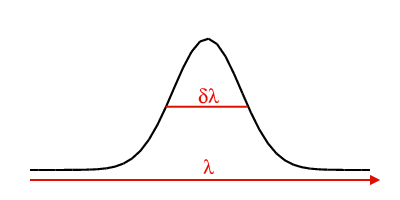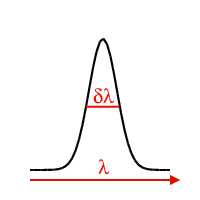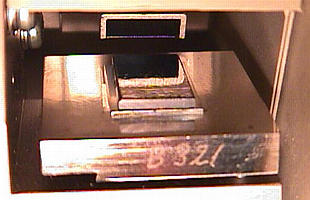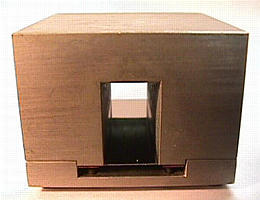 |
Monochromators |
 |
Monochromators |
Monochromators
Function
Historically, X-ray filters were used to reduce the unwanted white radiation from the X-ray source and to eliminate (as much as possible) the Kβ radiation. The drawback of filters is that the background radiation is still high and that the transmitted radiation is still not very monochromatic.
An alternative and more selective way to produce a beam of radiation with a narrower wavelength distribution is by using single-crystal monochromators. In practice "single crystals" are made up of lots of little crystal blocks all approximately aligned in the same orientation to form a mosaic. The distribution of the alignment of the blocks determines the so-called mosaic spread of the crystal.
Two types of monochromator may be distinguished based on the difference being in the mosaic spread of the crystals. Two commonly used materials are pyrolytic graphite and silicon, which can be used to make broad band and narrow band (Δλ / λ) monochromators, respectively. For pyrolytic graphite, the mosaic spread is relatively broad in contrast to silicon in which the alignment of the mosaic blocks is near perfect.


The monochromator works by reflection of the wavelengths that obey Bragg's Law for the particular d spacings of the monochromator. For a silicon crystal (which is cubic with a unit cell size equal to 5.4309 Å), the largest d spacing (which is from the (111) planes) is 3.136 Å. Application of the Bragg equation (λ = 2d sin θ) shows that for Cu Kα1, the diffraction condition will be satisfied for 2θ = 28.442°, while for Cu Kα2, it will be satisfied for 2θ = 28.514°, giving a difference in Bragg angle of only 0.072°. Hence only monochromator crystals with a narrow band pass, e.g. silicon, will be able to separate the Kα1 and Kα2 wavelengths from a laboratory copper X-ray source. By contrast, pyrolytic graphite monochromators with their wide band pass will pass both Kα wavelengths, but not Kβ for which the Bragg angle is considerably different.
Monochromator crystals partially polarise an unpolarised X-ray beam because the operating principle is one of Bragg diffraction. In theory the effect of polarisation on the intensity of the diffraction pattern should be taken into account during data processing, but in practice the correction effect is relatively small and often ignored.
What materials make good laboratory monochromators?
The following properties are desirable for any material used as a laboratory X-ray monochromator:
The most common materials for laboratory X-ray monochromators are pyrolytic graphite for broad band use and either silicon, germanium, or quartz for narrow band use.
Laboratory Usage
In the laboratory, the monochromator crystal can be positioned before or after the sample. It is common practice to use graphite as a post sample monochromator, but to use, say, silicon as a pre-sample monochromator. The main reason for this is one of mechanical stability since narrow-band pass monochromators require an extremely precise alignment in order to effectively separate the two Kα wavelengths and this cannot be maintained if the monochromator is made to move with the detector arm.
You might wonder what laboratory X-ray monochromators look like in practice. The following pictures show two types that we have in our laboratory:
 |
 |
The left-hand picture shows a graphite monochromator that was used as post-sample monochromator on a Bragg-Brentano diffractometer. The flat graphite crystal is stuck on to surface of the metal plate. The right-hand picture shows a germanium monochromator crystal. It is cut exceedingly thin (< 0.5 mm) so that it can be gently bent by clamping it between the two curved metal surfaces of the monochromator housing.
The choice of whether to use a broad-band or narrow-band monochromator will depend on your experimental objectives. For some experiments where high intensities are required, the graphite monochromator will be better. In addition, a post-sample graphite monochromator can reduce the effect of fluorescence from the sample. For high-resolution work, pre-sample narrow-band monochromators are often preferred. A comparison of good data obtained with both types of monochromator is shown.
| © Copyright 1997-2006. Birkbeck College, University of London. | Author(s): Jeremy Karl Cockcroft |